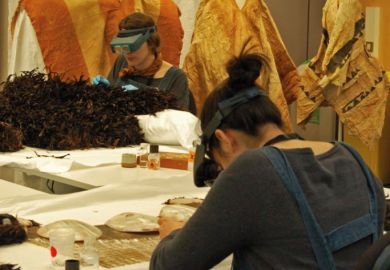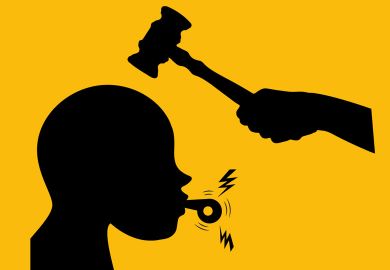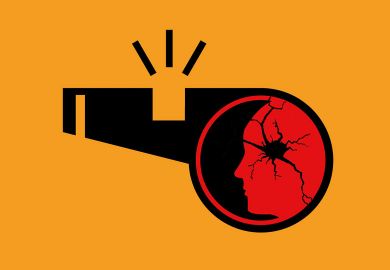I probably visit too many museums. Even worse, in nearly every exhibition I attend I find some misinformation and am compelled to try to contact the curator to correct it.
I have been engaged in this endeavour even longer than I have been a recognised scientific sleuth, who detects and reports on violations of research integrity in publications. The odds of making any positive difference are roughly comparable. Sometimes I am successful, but not often.
The parallels between the attitude of museums and that of scientific journals and institutions has been particularly brought home to me by the British Museum’s recently revealed reaction to the apparent theft of thousands of its artefacts.
I say its artefacts, even though I recognise that the museum is itself accused of being a repository for stolen cultural property. I’ve remained a member of the museum despite these controversies – which is why I have followed the theft story so closely.
You may know the headline, but I’ve been surprised by how few people are aware of the shocking details. In brief, a collector and dealer named Ittai Gradel bought some glass and stone gems on eBay and was curious about their provenance. He contacted the museum’s curators with questions based on his informed guesses more than a decade ago but did not receive a response.
Gradel subsequently learned that one of the gems appeared to have been part of the museum’s Townley collection. Then, in 2016, he recognised an onyx cameo fragment being offered for sale by the same seller as one displayed in a 1926 British Museum catalogue; in 2020, that image actually appeared on the museum website.
Eventually, Gradel worked out that the seller was a curator at the museum called Peter Higgs. (Higgs has denied the allegations and has not been charged with any crime.) He contacted the museum’s deputy director, Jonathan Williams, with his concerns about the sales and the lack of adequate registration of the Townley gems.
Initially, Gradel received merely an acknowledgement. He persisted and, a few months later, was informed by Williams that a thorough investigation had found that “the objects concerned are all accounted for” and there was “no suggestion of any wrong-doing on behalf of any member of Museum staff”. Gradel was unconvinced and contacted a trustee. An audit then discovered that 2,000 objects were missing.
Gradel’s treatment has so many parallels with my own. An independent investigator with special pattern-recognition skills detects that an image meant to represent one thing (an artefact legitimately for sale/an experimental result) is actually another (the property of a museum/a different or previously published result). The detective does some additional exploration to convince themselves the problem is real and then informs the institution (museum/university/journal).
The institution’s response is curt and, when the troublemaker persists, becomes dismissive. Museums now regard themselves as protectors of cultural property and self-righteously decry dealers and collectors as “looters”. Similarly, scientific institutions and journals dismiss whistleblowers, especially those who are not professional scientists, as “anti-science” dilettantes and troublemakers.
Another common element is that a friend of the accused helps to whitewash the infraction. Gradel subsequently learned that an archaeologist with whom he had shared his suspicions had alerted Higgs, who allegedly then altered records to cover his actions and used the archaeologist’s letter to support the idea that he was being “set up”.
In my experience, scientific buddies similarly defend suspected malefactors and exert themselves to minimise the importance of misconduct and even attack the whistleblower.
The institution, of course, has its reputation to protect and is afraid of the legal consequences of following up complaints. In most cases, journals will do everything in their power to avoid taking action, sometimes taking many years to address the infractions appropriately, or never doing so.
If there is any consequence for the malefactor, the institution will try to minimise publicity. In the meantime, the malefactor has frequently been able to cover up his misdeeds and, all too often, is allowed to migrate to a new position with at least partial impunity.
In the British Museum’s case, however, the institutional leadership did ultimately take responsibility for its failures: an outcome remarkable for its rarity. Its director, Hartwig Fischer, and Williams both resigned last year after the thefts were announced. Higgs was fired for gross misconduct and, in response to civil legal action by the museum, has been ordered to return any museum artefacts he may have. The museum has also committed to the full and robust cataloguing of the objects in its collection.
Journals should learn from this example. They also need to vastly improve their archiving – specifically, of the editorial/peer-review trail. In my experience, they routinely discard (and are nearly totally unwilling to share) that information, which is frequently important to establishing the validity of data and the propriety of the publication process.
Museums and journals alike should react to whistleblowers with gratitude rather than defensiveness and hostility. Indeed, the expertise of the sleuth should be integrated into timely investigations and should be acknowledged and rewarded. Equally, testimony by those who minimise integrity violations or defend violators in the face of substantial evidence should be evaluated critically.
Finally, institutions should admit their failures and recommit themselves to serving the public good for which they were created – rather than protecting their own and being obsessed with their public images.
David Sanders is an associate professor of biological sciences at Purdue University in Indiana.
POSTSCRIPT:
Print headline: Greet sleuths unearthing malpractice with gratitude
Register to continue
Why register?
- Registration is free and only takes a moment
- Once registered, you can read 3 articles a month
- Sign up for our newsletter
Subscribe
Or subscribe for unlimited access to:
- Unlimited access to news, views, insights & reviews
- Digital editions
- Digital access to THE’s university and college rankings analysis
Already registered or a current subscriber?








